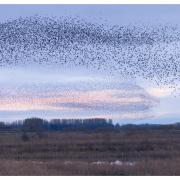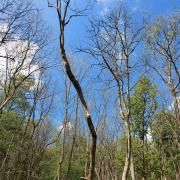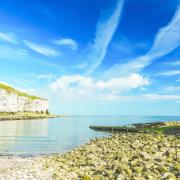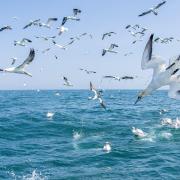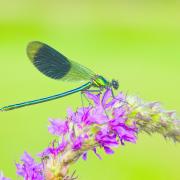Pocklington canal is renowned for its wildlife, and a new investment strategy could make it a whole lot wilder, as Jo Haywood reports
Visitors of the human variety are not the only ones drawn to the classic market town of Pocklington. Beautiful, petrol-hued dragonflies find it pretty irresistible too.
But they are not attracted by the bustling market place, the vibrant arts centre, the enticing independent shops, the stately gardens and the wealth of history provided by its churches and schools. No, it’s the cool depths of the canal that float their boat.
Pocklington Canal, a 9.5-mile stretch that opened in 1818, sits just outside the town itself but plays an important role in its day to day life.
‘Most of the older people in town probably learned to swim in the canal when they were children,’ said Paul Waddington, chairman of Pocklington Canal Amenity Society (PCAS). ‘And virtually everyone seems to walk their dog there
‘The canal head picnic site is popular, and it’s part of what makes the waterway such a valuable recreational resource. It brings visitors to the town, with people pulling off the main road to enjoy their lunch by the water. We actually get quite a lot of people heading to the coast to catch a North Sea Ferry, so you often hear German and Dutch accents around the picnic tables.’
The society was formed in 1969 to restore and promote the canal. It was in a derelict state at the time but, with hard work and dedicated fundraising, PCAS has made the stretch from East Cottingwith to Melbourne navigable again and has restored four locks on the remainder, taking it closer to its goal of reinstating the entire waterway right up to the canal head at Pocklington.
‘It's taken us over 40 years to get to where we are now,’ said Paul. ‘Ithink we have at least another ten years of work ahead of us. And even when that’s complete, it’s like the Forth Bridge, something will be deteriorating and we’ll be back at the beginning again.’
The canal is currently used by boating enthusiasts – PCAS runs its own pleasure boat every Sunday throughout the summer – and by anglers, walkers and nature lovers.
‘It’s most celebrated for its dragonflies and damselflies,’ said Paul. ‘also noted for its invertebrates, fascinating beetles and scurrying things, and for its open access to sites where migrating birds gather.’
It is this idyllic countryside location that makes Pocklington canal stand out from the crowd, attracting canal enthusiasts – not unlike trainspotters – from around the country to tick it off their must-see list.
‘There’s a whole community of dedicated canal enthusiasts,’ said Paul. ‘What draws them here is the unusual rural setting. Most canals were built for industrial purposes. But this one wasn’t. It was more of a status symbol; a way of saying the town was open for business and thriving.’
Unfortunately, the good people of Pocklington had left it a bit late to build their canal and in less than 30 years it was superceded by the railway.
It fell into serious disrepair but now, thanks to the members of PCAS, it’s enjoying a strong resurgence in popularity. But maintaining and improving the canal doesn’t come cheap and the fundraising process never stops.
Which is why a study has been commissioned by British Waterwaysand the Leader Partnership Waterways to find out how the canal is being used now, what improvements local residents would like to see in the future and where opportunities lie for grants and funding.
The survey is being carried out by researcher Marion Blockley, who has already spoken to numerous locals after setting up a stall in Pocklington market.
‘I want to find out who are the current and potential users of the canal,’ she said. ‘Local families, schools, bird-watchers, boaters, dog walkers, ramblers, kayakers, dragonfly enthusiasts, botanists, local historians, industrial archaeologists – how do we meet all their needs without compromising the significance of this canal?’
Marion wants to find a way of telling the story of Pocklington canal and of the heroic efforts of PCAS through displays placed sensitively along its route to avoid cluttering the unspoilt, tranquil landscape.
She also wants to introduce ways of actively managing the waterway to enhance its natural and cultural significance, and to encourage more local people, especially younger volunteers, to step up and do their bit.
‘The aim of the plan is to attract significant sums of funding but also to encourage people to appreciate and enjoy the canal in ways which take account of its special environmental and heritage qualities,’ said Marion.
‘We want to strengthen links between the canal, the local villages and Pocklington for local benefit, informed by the wishes of local people.’











